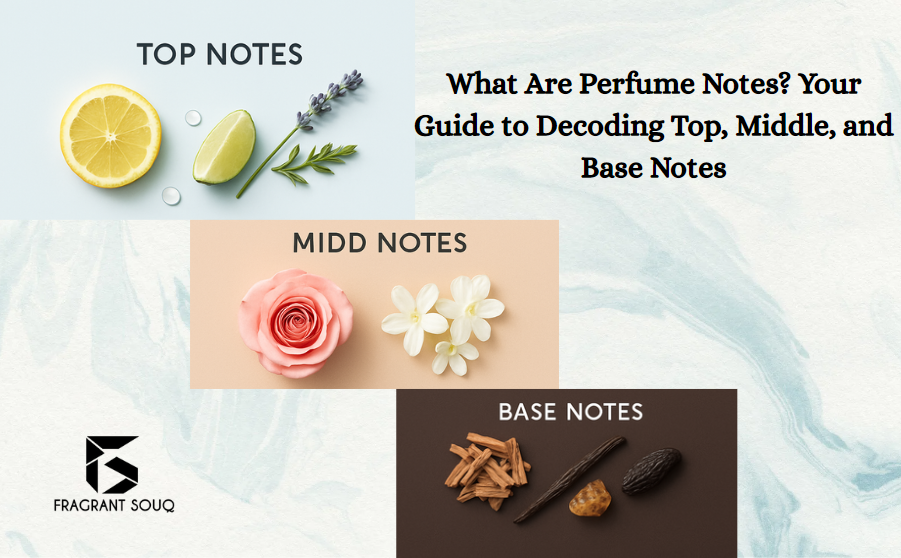Have you ever spritzed a perfume and been instantly transported to a sun-drenched Italian lemon grove, only to find yourself an hour later wrapped in the warm, sensual embrace of vanilla and sandalwood? This magical transformation isn’t random—it’s the sophisticated science and art of perfume notes working in perfect harmony.
Much like a musical composition, a fine fragrance is a layered creation. It unfolds over time, revealing its full story chapter by chapter. Understanding these chapters—the top, middle, and base notes—is the key to decoding any scent and finding the one that truly sings to you.
The Symphony of Scent: A Three-Act Structure
Think of your favorite perfume as a symphony in three acts:
- The Overture: The Top Notes
- The Heart: The Middle (or Heart) Notes
- The Finale: The Base Notes
Let’s pull back the curtain on each one.
Act I: The Top Notes (The First Impression)
What they are: Top notes are the scent molecules that evaporate the fastest. They are your very first impression of a perfume, the initial burst of scent that hits your senses within the first 5-15 minutes of application.
Their Role: To be captivating and refreshing. They are the “hook” that draws you in and makes you want to discover more.
Common Top Notes: These are typically light, fresh, and volatile ingredients.
- Citrus: Bergamot, Lemon, Orange, Grapefruit
- Light Fruits: Green Apple, Berries, Anise
- Herbs: Basil, Lavender, Rosemary
Pro Tip: While crucial for the initial sale, top notes are fleeting. Never judge a perfume solely on its top notes—the true character of the fragrance is yet to come!
Act II: The Middle Notes (The Heart of the Matter)
What they are: Also known as the “heart notes,” these emerge just as the top notes begin to fade (around 15-60 minutes after application). They form the core personality of the perfume and serve as a bridge between the sharp opening and the deep dry-down.
Their Role: To provide the main theme and body of the fragrance. This is the scent that will linger on your skin for several hours and is often the most prominent note you and others will perceive.
Common Middle Notes: These are often more mellow and rounded.
- Florals: Jasmine, Rose, Ylang-Ylang, Lily of the Valley
- Spices: Cinnamon, Nutmeg, Black Pepper
- Unique Accords: Green, Aquatic, or Fruity nuances
Act III: The Base Notes (The Lasting Memory)
What they are: Base notes are the foundation upon which the entire fragrance is built. They are the slowest to evaporate, appearing 30 minutes to an hour after application, and they can last for hours, even days, on the skin.
Their Role: To provide depth, richness, and longevity. They fix the more volatile notes to the skin, ensuring the fragrance doesn’t disappear in minutes. The base notes are what you remember long after someone has left the room.
Common Base Notes: These are typically heavy, deep, and warm.
- Woods: Sandalwood, Cedarwood, Patchouli, Vetiver
- Resins & Balsams: Frankincense, Myrrh, Vanilla, Benzoin
- Musks & Animalics: White Musk, Amber, Leather, Tonka Bean
How the Notes Work Together: The Art of the Perfumer
A perfumer, or “nose,” is like a master composer. They don’t just mix ingredients; they structure them to tell a story over time. This structure is known as the fragrance pyramid—a conceptual diagram with the top notes at the peak, the middle notes in the center, and the base notes forming the wide foundation.
The magic happens in the transitions. A well-crafted fragrance will have a seamless evolution, where the heart notes emerge gracefully from the top, and the base notes blend with the heart to create a unique and lasting impression. This journey from the first spritz to the final whisper is what makes wearing perfume such a personal and evolving experience.



